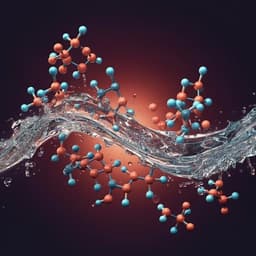
Engineering and Technology
Self-peeling of frozen water droplets upon impacting a cold surface
W. Fang, F. Zhu, et al.
Explore an innovative passive ice removal method that utilizes thermal-mechanical stress to enable self-peeling of frozen droplets on cold hydrophobic surfaces, as revealed by researchers Wen-Zhen Fang, Fangqi Zhu, Lailai Zhu, Wen-Quan Tao, and Chun Yang. This breakthrough contrasts with traditional methods, showcasing complete self-peeling and promising implications for anti-icing surface design.
~3 min • Beginner • English
Related Publications
Explore these studies to deepen your understanding of the subject.







